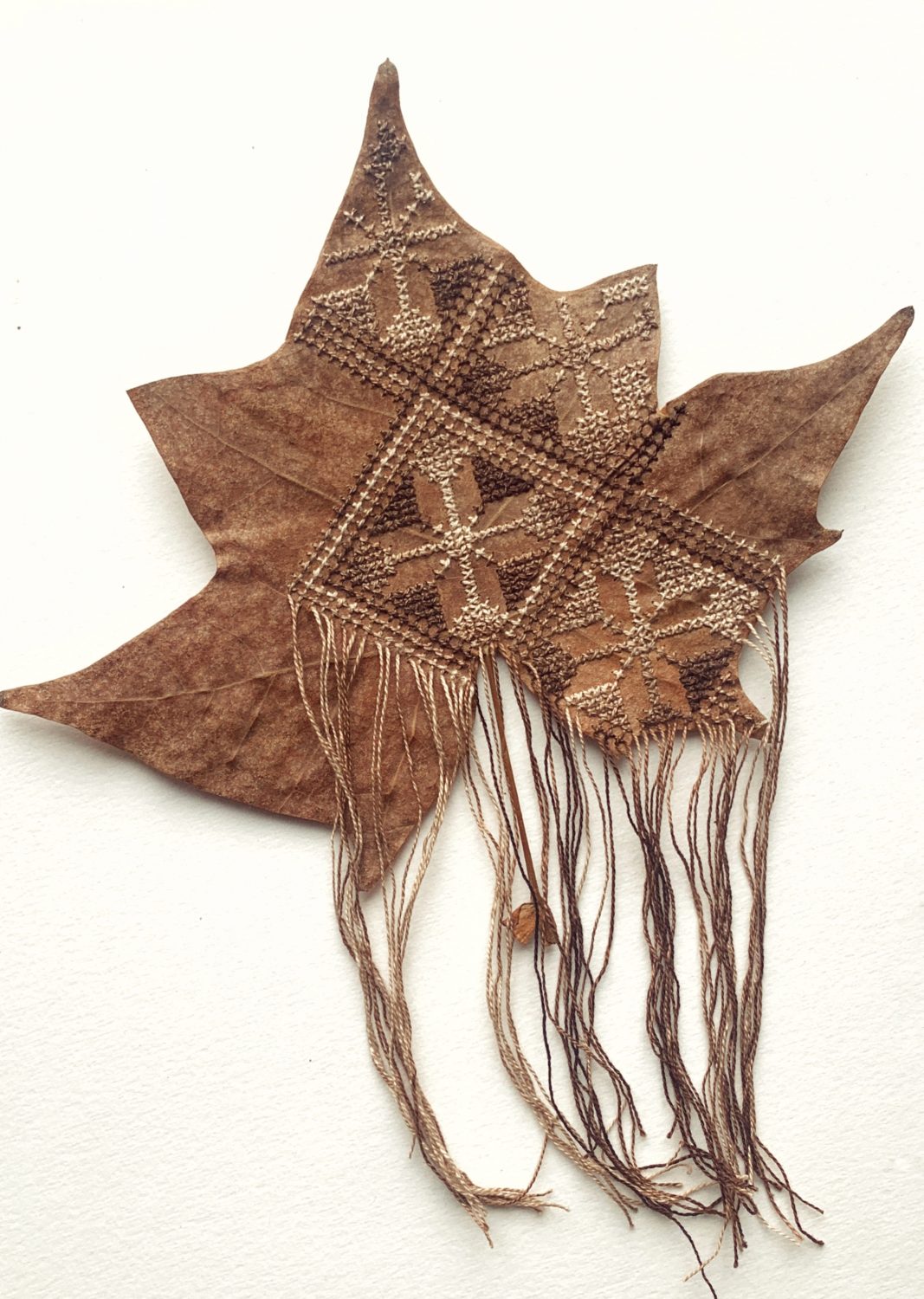Needleworkers have been cross stitching for centuries. While the simple “X” stitch hasn’t changed, what we “X” ON and what we “X” WITH has changed over time. Today’s threads include wool, cotton, silk, metallic, twine, bamboo, rayon, polyester, real metal, holographic, glow-in-the-dark, reflective, wired and more. We cross stitch on fabric, linen, furniture, rugs, screen doors, walls and more. It’s a pretty cool time to be a cross stitcher. We can stitch with anything on anything. Actually, that can be rather overwhelming.
So let’s simplify the thread part, the metallic threads in particular since that is our specialty. Since 1972, Kreinik has been making metallic threads used by stitchers of all skill levels and all ages worldwide. Let’s categorize Kreinik cross stitch threads into three kinds, which I’ve described here using super (non)technical terms for simplicity’s sake:
1. BARELY THERE
This would be Kreinik Blending Filament and Cord, super thin threads that give the most subtle metallic shimmer. Whether you use them alone, layered on top of stitches, or combined with other fibers in the same needle, these baby threads offer whispers of effects, the hint of dimension, and other nuance-y like looks. Stitch carefully, because it’s like embroidering with tinsel or hair. Since they are lightweights, you can use these anywhere.

2. BOLD ROUND THREADS
These are Kreinik Braids, which come in different thicknesses (sizes or weights), with Very Fine #4 Braid being the thinnest and Heavy #32 Braid being the thickest (so the smaller the number, the smaller the thread). How do you pick which cross stitch threads to use? It’s all about size. Use the thinner #4 Braid on small-count linen or 18-count Aida. On 14-count Aida, use #8 Braid, which is twice the size of #4 braid (4 x 2 = 8, get it?). If you are stitching on a burlap sack, you need something bigger, so go up in Braid size; it really is that simple. Kreinik #12 Braid is three times as thick as #4 Braid (4 x 3 = 12), while Kreinik #16 Braid is twice as thick as #8 Braid (8 x 2 = 16)…and so on. I know that’s a lot of numbers; just click here for a handy chart showing which sizes to use on common fabrics. The different sizes come in similar colors (200+), so you don’t have to sacrifice your favorite shade when switching to a different Braid size. Also cool: these Braids are meant to be used as a single strand, so it makes stitching simpler. You don’t need to combine plies like you do with embroidery floss. Instead of stitching with two strands of #4 Braid, for instance, just use one strand of #8 Braid (4 x 2 = 8, remember?). You get the appropriate coverage, but don’t have to control two strands in your needle. Nice, eh?

3. FLAT RIBBONS
Kreinik makes 1/8-inch-wide or 1/16-inch-wide metallic ribbons that come in the same color range (200+). The advantage of using ribbons as cross stitch threads is the flat texture. If you are stitching on a bold background, for instance — like a window screen, or patterned fabric — ribbon gives you a surface thread with a wide area of light reflection. However, even if you are stitching on a basic backdrop — like a greeting card, 14-count Aida fabric, or an egg — a flat ribbon gives you a stand-out stitch with visual appeal. To get the flatness, just use your finger or needle to keep the thread smooth as you lay your cross stitch. Choose the Kreinik 1/16″ Ribbon when you want a petite ribbon, or the 1/8″ Ribbon when you need something wider (1/8″ is twice as wide as 1/16″).

So that is my back-to-basics summary about selecting metallic cross stitch threads.
If you have specific questions, just email me: info at kreinik dot com. I have been cross stitching for about 20 years, and I’ve used many different materials. I think that variety and sense of exploration keeps me from getting bored with the simple X stitch. Bottom-line is that the cross stitch threads you can use today are exciting, colorful, easy to use, and care-friendly. If you are still in the 6-strand embroidery floss stage of your stitching life, let me encourage you to try other types of materials to create visual interest, mix up your textures and energize your creativity (ie, like the benefits of thinking outside the box). The top tip I can offer for stitching with metallics or any thread, however, is to use the right needle. Make sure it is in good shape—no rust, no nicks in the eye—and slightly larger than you think you need so that it allows the thread to glide smoothly through your material. (Hmm, I guess “Size does matter” applies to more than just threads…)
For complete information on Kreinik threads, visit our website .

—–
Dena Lenham, aka KreinikGirl, is Creative Director at Kreinik Manufacturing Company, a family-owned, USA-based business that manufactures high-quality yarns and threads made of metallics, silks and real metals from their West Virginia factory.




